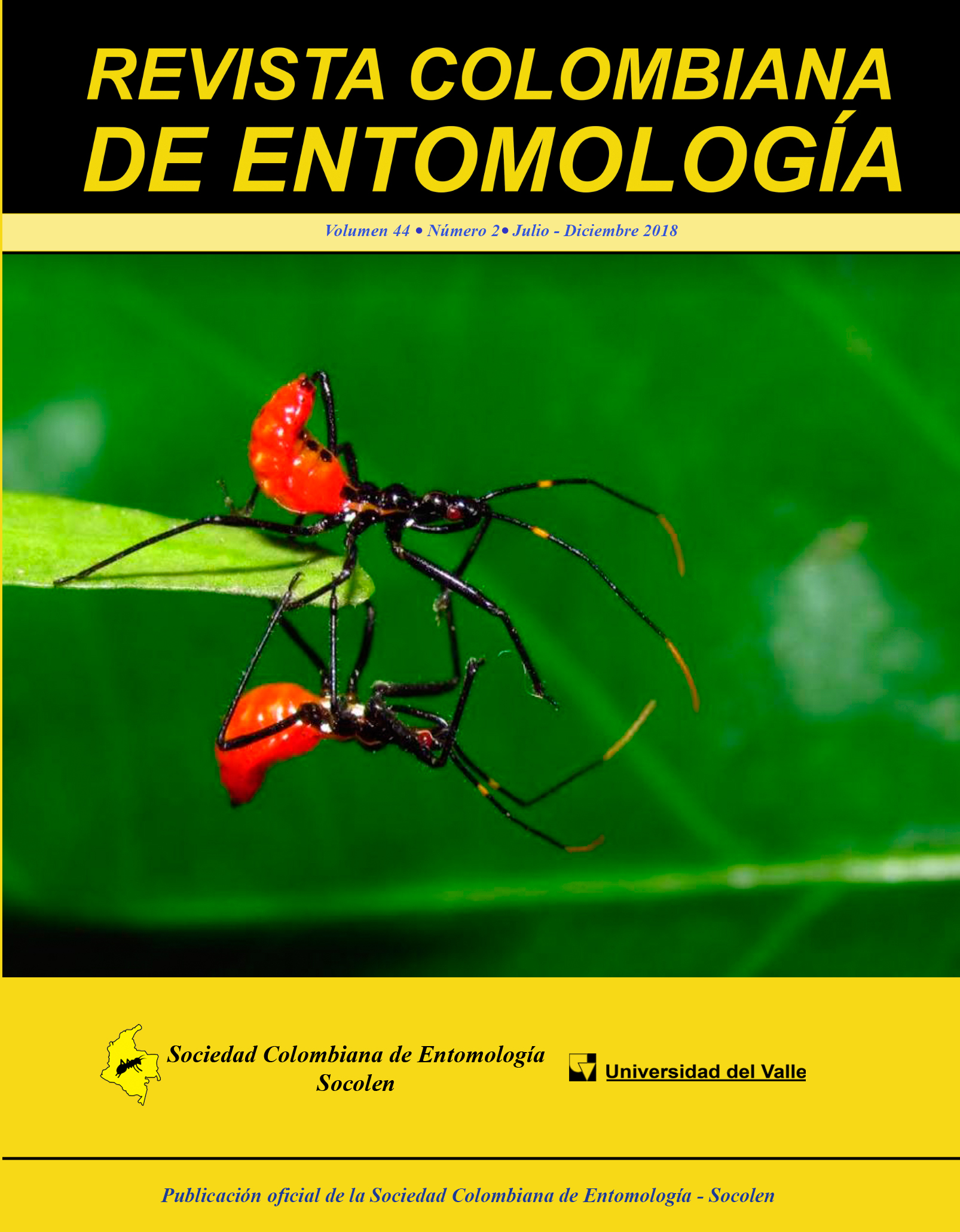Preferences of thrips (Thysanoptera) for the aerial structures of cotton plants (Gossypium hirsutum) in Colombia
Keywords:
Hosts, thrips, phytophagous, MalvaceaeMain Article Content
The aim of this study was to determine the preference levels of species of thrips for aerial structures of cotton plants. To accomplish this, samples of associated thrips species to cotton crop were collected and identified in warm weather valleys of the high Magdalena, in the Andean region of Colombia, A total of 60 cotton producing farms were sampled during the capsule filling phase in which the cotton plants presented young leaf, flower bud, flower and capsule microhabitats. The Bray-Curtis Cluster analysis and the Kruskall-Wallis non-parametric test were utilized. The thrips species found were: Thrips palmi, Scirtothrips dorsalis, and Frankliniella cephalica. T. palmi was the most frequent (n = 3595; µ = 14.97 ± 32.35), while S. dorsalis (n = 856; μ = 3.56 ± 6.35) and Fr. cephalica (n = 405; μ = 1.68 ± 9.13) were found in lower numbers. Thrips palmi was found in all four micro-habitats, while S. dorsalis preferred capsules, followed by leaves and floral buds. Frankliniella cephalica showed preference for flowers. The present study revealed the phytophagous action of T. palmi and S. dorsalis as insects with intra-host generalist behavior, with preferences for leaves (phyllophagous), flower buds (anthophagous) and capsules (carpophagous). Frankliniella cephalica acted as a specialist, with a preference for the flowers (anthophagous) of the cotton plant.
Downloads

This work is licensed under a Creative Commons Attribution-NonCommercial-ShareAlike 4.0 International License.
Authors retain the copyright on their work and are responsible for the ideas expressed in them. Once a manuscript is approved for publication, authors are asked for a publication license for the term of legal protection, for all territories that allows the use, dissemination and disclosure of the same.

